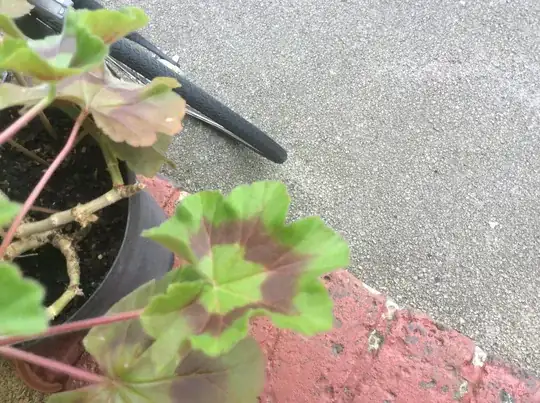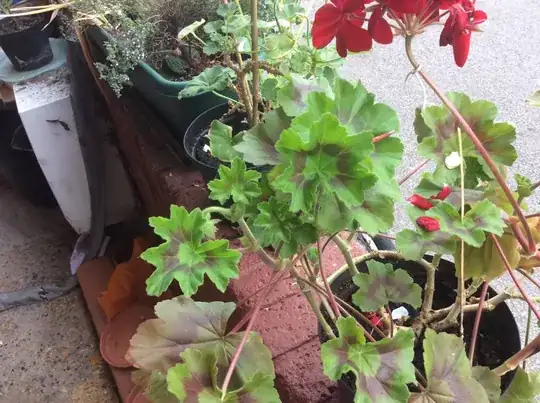There are separate questions about mistakes that I made in the repotting process:
- What to do (immediately) with a waterlogged pot plant?
- What to do (after two weeks) with a waterlogged pot plant?
TL;DR
What are these red marks on the leaves of my pelargoniums?
I recently repotted a bunch of house plants into larger pots, with new compost.
I mixed into the compost some water-retention crystals - the kind that absorb loads of water and can then release that water gradually. I did this because I struggle with under-watering the plants and was hoping that this would result in the dampness of the soil being more stable over time.
A) If this was a terrible idea from the get-go let me know :)
Perhaps I mis-judged the amount of crystals, or perhaps it was an error to soak the crystal-enhanced pots like I do for the rest of my plants, but the upshot was that the pots became extremely wet for a long period - I would say waterlogged.
There was water seeping out of the pot into the saucer for 2-3 days (which I would regularly empty), and the surface of the soil was definitely wet to the touch. I then didn't water the pot for a week and a half, and left the plant outside on a South-East facing balcony for a very hot(23-27 degrees) and sunny week. and by the end of that week and a half, the soil is still not particularly dry (although it is at least not actively WET now).
I perceive that the plants definitely suffered from this - several (though not all) of the leaves very suddenly went extremely pale and then died, other leaves have gained a pale halo around their edge, and for the 3-4 days after I did this, the plants appeared to wilt (as though I'd UNDER-watered them) though it has now recovered.
I have multiple questions, so the above set up has been duplicated on multiple posts, but my question here is ...
On one of the plants (a red pelargonium) a few of the leaves died, but almost ALL the leaves now have red leaf-shaped marks on them.
What are they? Are they related to the over-watering or is that just a coincidence?

